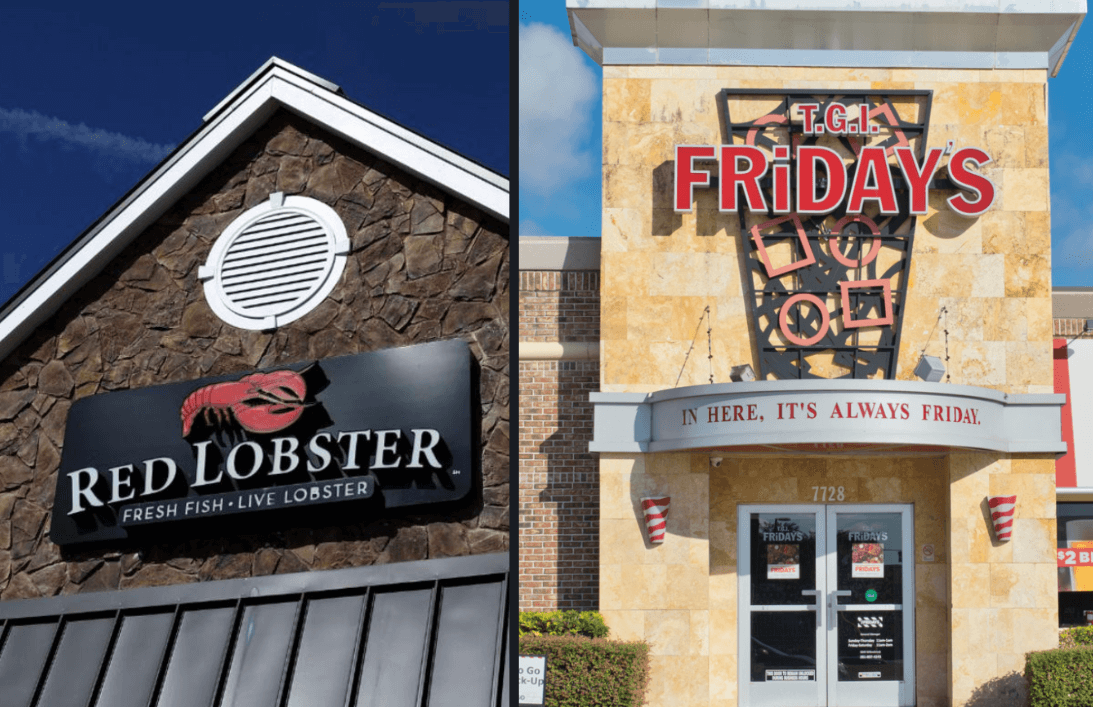Dining out has always been more than just a meal; it’s an experience. For many, places like Red Lobster and TGI Fridays Closing have served as the backdrop for countless celebrations, casual nights out, and family gatherings. But as we navigate through shifting tides in the restaurant industry, these beloved chains face new challenges that could reshape our dining experiences forever. With COVID-19 leaving its mark on how we eat and socialize, it’s time to reflect on what made these establishments special and what their potential closing means for all of us. Let’s dive into this culinary journey together!
Closing Time: How Red Lobster and TGI Fridays Shaped Our Dining Experiences
Red Lobster TGI Fridays closing have long been staples in American dining culture. Their inviting atmospheres made them the perfect spot for families and friends to gather. From endless shrimp to signature cocktails, these chains offered a menu filled with comfort food that catered to diverse tastes.
Both brands created unique dining experiences that emphasized fun and relaxation. The vibrant decor of TGI Fridays contrasted beautifully with the nautical themes of Red Lobster, drawing diners into their worlds. Birthday celebrations often revolved around those iconic desserts served with flair.
As consumer habits evolve, so do expectations surrounding casual dining options. People are now seeking more than just a meal; they want authentic experiences that reflect changing values in food quality, sustainability, and social interaction.
The impact of COVID-19 on the restaurant industry
The COVID-19 pandemic hit the restaurant industry like a tidal wave. Many beloved dining establishments faced sudden closures and strict regulations, forcing them to adapt quickly or risk shutting down for good.
As indoor dining came to a halt, restaurants scrambled to implement takeout and delivery services. Some even embraced outdoor seating options, creating new ways for patrons to enjoy their meals safely.
For chains like Red Lobster and TGI Fridays, the challenge was immense. Their reliance on dine-in experiences put them at a disadvantage as consumer habits shifted overnight. The once-bustling atmosphere of casual dining became eerily quiet, altering how we perceive our favorite spots forever.
The decline in popularity of chain restaurants
As dining habits evolve, chain restaurants face a notable decline in popularity. Once synonymous with family gatherings and celebrations, establishments like Red Lobster and TGI Fridays are now struggling to capture the same enthusiasm.
Consumers increasingly seek unique culinary experiences rather than generic offerings. The rise of local eateries and food trucks has shifted attention away from predictable menus found in chains. Diners crave authenticity, often opting for meals that tell a story.
Additionally, social media plays a significant role in influencing preferences. Vibrant dishes served at independent spots grab attention online, making it harder for traditional chains to compete. As consumers prioritize quality over quantity, the landscape of casual dining is rapidly changing.
Changing consumer preferences and trends in dining
Consumer preferences have shifted dramatically in recent years. Diners are more health-conscious and seek fresh, local ingredients. This trend has led many to opt for restaurants that emphasize sustainability and farm-to-table practices.
Additionally, convenience plays a crucial role in dining decisions today. With the rise of food delivery apps, consumers want meals that can be enjoyed at home without sacrificing quality. Fast-casual eateries often bridge this gap, offering quick service while maintaining a focus on taste.
Moreover, experiences now take precedence over traditional dining norms. Restaurants need to create memorable moments rather than just serve food. As entertainment becomes intertwined with the meal experience, establishments must adapt or risk being left behind as consumer expectations continue to evolve.
The future of casual dining chains
The future of casual dining chains looks uncertain as consumer habits evolve. Diners are seeking unique experiences over traditional menus. This shift is pushing restaurants to innovate and diversify their offerings.
Technology will play a crucial role in this transformation. Many chains are embracing online ordering and delivery services, catering to the demand for convenience. In addition, enhanced digital marketing strategies will help these brands connect with younger customers.
Sustainability is another significant factor shaping the industry’s landscape. Consumers increasingly prefer restaurants that prioritize fresh ingredients and environmentally friendly practices. Casual dining chains must adapt quickly or risk becoming obsolete in an ever-competitive market.
Alternative options for consumers
As chain restaurants like Red Lobster and TGI Fridays face challenges, consumers increasingly seek alternatives. Local eateries and food trucks have thrived, offering unique flavors that cater to diverse tastes. These spots create a sense of community while serving fresh, often locally sourced ingredients.
Delivery services have also revolutionized dining habits. With apps like Uber Eats and DoorDash, people can explore global cuisines from the comfort of their homes. This convenience has made it easier than ever to enjoy restaurant-quality meals without stepping outside.
Plant-based options are on the rise too. Many diners now opt for healthier choices or vegan cuisine as they prioritize wellness over traditional meat-heavy menus. The shift reflects evolving lifestyles that favor flexibility in dining experiences.
Conclusion: Reflecting on the end of an era for Red Lobster and TGI Fridays
As we reflect on the closing time for iconic chains like Red Lobster TGI Fridays closing it’s evident that these establishments shaped our dining experiences in more ways than one. They offered a sense of familiarity and comfort, becoming staples in many communities.
The pandemic accelerated shifts in consumer behavior, pushing diners towards new options. As tastes evolve and preferences change, what was once beloved can fade away. The memories created over countless meals at these restaurants will linger long after their doors close.
While new alternatives emerge to capture the dining landscape, it’s difficult not to feel nostalgic about what these chains provided: a place for celebrations, gatherings, and moments shared with family and friends. Their legacy remains etched in our culinary culture even as we move forward into an ever-changing dining scene.
